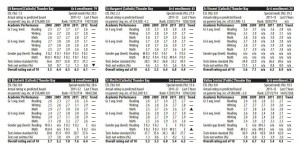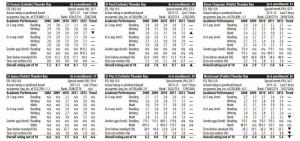
THUNDER BAY – News – School rankings are show Thunder Bay schools are not following the provincial trend. The Fraser Institute has issued the 2013 annual rankings. While overall the ranking shows improvement in elementary schools across Ontario, only one Thunder Bay school is showing an improved trend.
Across Ontario, 167 elementary schools showed significant improvement in their academic performance over the past five years, according to the Fraser Institute’s annual school rankings.
Thunder Bay Schools trending down
In Thunder Bay, St. Paul is trending upwards, with a solid growth in math, especially at the grade three level. However the trend for grade three math over at St. Francis is down over the past five years. At Westmount School, since 2008 the ranking has dropped from a 6.9 ranking down to 5.4.
St. Martin has trended upwards in math and has seen the schools overall ranking up from 5.3 in 2008 to 6.3 in 2012.
Provincial Schools Rankings

Of these improving elementary schools, 64 are in the GTA, 44 in Southwestern Ontario, 36 in North Central Ontario, and 23 in Eastern Ontario, highlighting the fact that school improvement is happening in all regions of the province.
“This is why the Fraser Institute school report card is the go-to source for measuring academic improvement: it highlights school success stories from Murillo in the west to Cornwall in the east and from Timmins in the north to Windsor in the south,” said Peter Cowley, Fraser Institute director of school performance studies.
“Our report shows that all schools are capable of improvement, regardless of the personal or family challenges their students might face. If educators want to help students learn and improve, they should be talking to these schools.”
The Report Card on Ontario’s Elementary Schools 2013 rates 2,714 public, Catholic, and francophone elementary schools based on nine academic indicators using data from the annual provincewide tests of reading, writing, and math administered by the Ontario government’s Education Quality and Accountability Office (EQAO).
“By pinpointing the subject areas in which individual schools are improving or declining and how their academic performance compares to that of other Ontario schools over the past five years, our report helps parents and educators prioritize learning challenges in their schools,” Cowley said.
The report card also includes important information about each school’s make-up, including parents’ average income, the percentage of ESL students, and the percentage of special needs students.
The complete results for all 2,714 elementary schools will also be available at www.compareschoolrankings.org where parents can compare schools on their results over the last five years.







